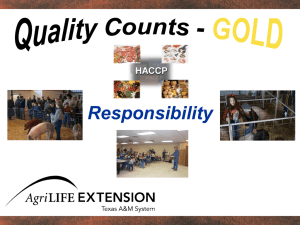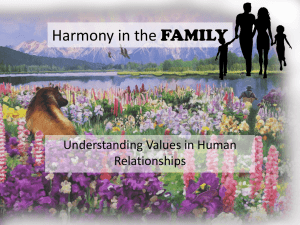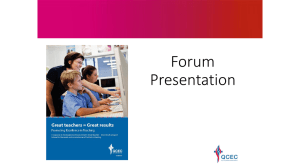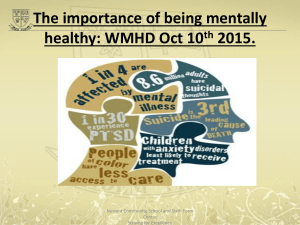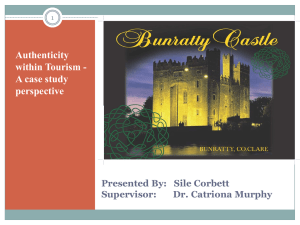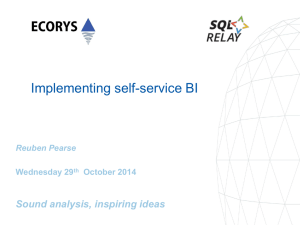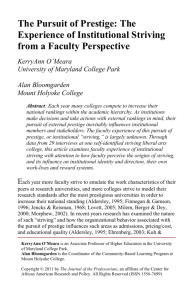Conference presentation - National Foundation for Educational
advertisement
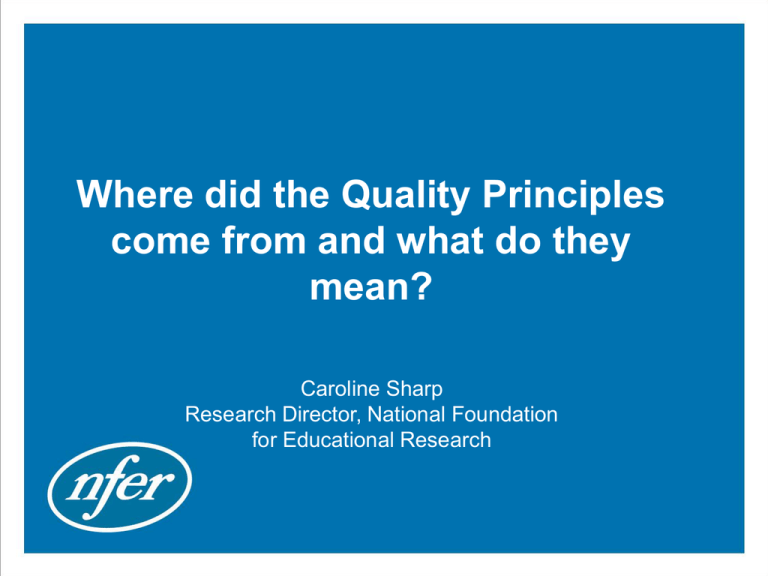
Where did the Quality Principles come from and what do they mean? Caroline Sharp Research Director, National Foundation for Educational Research Developing Quality Principles: the Story So Far • Arts Council England said all children and young people should have high quality arts experiences • We studied 31 quality frameworks from UK and internationally • We interviewed 31 people in arts and cultural organisations involved in work by, with and for children and young people • This identified 7 Quality Principles • We started The Quality Conversation • Young people responded to the Quality Principles in Newcastle, November 2012: How do we know it’s propa belta’?’ 2 The Quality Principles 1. 2. 3. 4. 5. 6. 7. Striving for excellence Emphasising authenticity Being exciting, inspiring and engaging Ensuring a positive, child-centred experience Actively involving children and young people Providing a sense of personal progression Developing a sense of ownership and belonging. 3 1. Striving for Excellence Having a clear vision and striving for excellence, through providing high-quality arts work and experiences, to achieve the best possible outcomes for children and young people. 4 1. Striving for Excellence •Aim to achieve the best experiences for children and young people •Innovate and take calculated risks •Aim for the best artistic quality •Expect commitment and high standards •Invest in preparation, learning, coaching and reflection 5 2. Emphasising authenticity Offering a real and meaningful artistic experience or product, to help young people develop artistic awareness, understanding and skills. 6 2. Emphasising authenticity • Provide real experiences, not ‘surface level’ appeal or a ‘cut down’ version of something designed for adults • Set the experience in context • Develop artistic skills and understanding • Treat young people as fellow artists 7 3. Being exciting, inspiring and engaging Being exciting and engaging, through providing inspiring and relevant opportunities that stretch, challenge and excite children and young people. Foster positive dispositions towards the arts, and enhance their self-esteem, wider aspirations and life choices. 8 3. Being exciting, inspiring and engaging • Chose themes that excite and inspire • Ensure work is relevant to children and young people • Aim to have an impact on young people now and in the future • Challenge young people to take on new ideas 9 4. Ensuring a positive, child-centred experience Ensuring a positive, child-centred experience for all through having the passion, commitment, knowledge and skills for work involving children and young people, helping them to develop as confident individuals and celebrate their achievements. This includes encouraging individual contributions and valuing diversity. 10 4. Ensuring a positive, child-centred experience • Adults who are passionate about working with children and young people and who have the right skills • Clear, honest communication and flexibility • Working alongside, sharing skills • Valuing individuals, encouraging young people from different backgrounds and with different needs • Make it OK to be different 11 5. Actively involving children and young people Emphasising the active involvement of children and young people, through interactive opportunities – hands-on participation and collaboration – to develop children and young people’s skills and creativity. 12 5. Actively involving children and young people •Actively engage young audiences •Hands-on involvement •Direct collaboration 13 6. Providing a sense of personal progression Taking account of children and young people’s individual needs, through recognising their different starting points, experiences and achievements; enabling them to achieve their potential, and progress on to next steps in their learning and achievement. 14 6. Providing a sense of personal progression • Find out what a young person can do and what interests them •Consider what they might want to do next •Make connections and referrals 15 7. Developing a sense of ownership and belonging • Focusing on children and young people’s sense of ownership and belonging, so that young people can make an informed judgement about ‘this is, or could be, or isn’t for me’. 16 7. Developing a sense of ownership and belonging • Encourage choice, autonomy, decision-making and creative responses • Provide opportunities for children and young people to take the lead and set the direction • Welcome children and young people • Help them feel part of the family 17 Creative challenges: responding to feedback from young people • Do we need to clarify the meaning of excellence/quality in Principle 1 (Striving for Excellence)? • Principle 2: ‘Authenticity’ was not clear to young people – do we need to call it something else? • Principle 5: what does ‘active involvement’ mean in work for children and young people? • Principle 7: Would it be better to say: ‘Ensure children and young people belong and that the experience belongs to them’? How would ‘ownership’ work for younger children? 18 Creative challenges: next steps • How would you like to see these principles used in future? • How will we know if better quality is achieved as a result? 19





